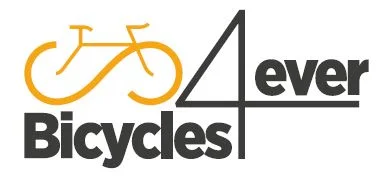Carspiracy – You’ll Never See The World The Same Way Again with GCN
Source: GCN Youtube Channel: Carspiracy – You’ll Never See The World The Same Way Again
Video Carspiracy – You’ll Never See The World The Same Way Again with Global Cycling Network
Video Carspiracy – You’ll Never See The World The Same Way Again with Global Cycling Network YouTube Channel.
Carspiracy – You’ll Never See The World The Same Way Again
Over the last 100 years, the world has been inundated with a pervasive message that cars are the ultimate mode of transportation. However, is this narrative accurate? Are cars truly the safest option for pedestrians, as many people believe? In a surprising turn of events, a recent study conducted by leading psychologist Professor Ian Walker has revealed some shocking truths about our society’s deep-rooted obsession with cars, leading to a phenomenon known as “Moto normativity.”
### The Impact of Moto Normativity
Professor Walker’s research involved surveying over 2,000 individuals and analyzing their responses to questions about driving. The results were staggering. When participants were asked about scenarios involving driving, their responses drastically differed from those presented without any mention of cars. It became apparent that the mere mention of cars transformed people’s perceptions and values, leading them to prioritize driving over other forms of transportation.
### Unconscious Bias and Cultural Influence
One of the most striking findings of the study was the extent to which Moto normativity permeates all aspects of society. Even individuals who do not drive themselves tend to excuse and downplay the harms associated with driving, reinforcing the prevailing belief that cars are king. This unconscious bias is deeply ingrained in our culture, perpetuated by media portrayals, street designs, and societal norms that consistently prioritize cars over pedestrians.
### The Role of Built Environments
To further illustrate the consequences of Moto normativity, Professor Walker pointed out examples of how our built environments contribute to the problem. He highlighted instances where pedestrian spaces were compromised or minimized to accommodate car traffic, emphasizing the inherent dangers posed to pedestrians in an environment designed to prioritize cars’ convenience and speed. These design choices reflect a larger societal preference for cars over alternative modes of transport.
### Policy Interventions and Public Perception
In an effort to challenge the entrenched car culture, some policymakers have implemented policies aimed at promoting alternative forms of transportation, such as walking and cycling. However, these initiatives have often faced opposition from segments of the population resistant to change. This resistance underscores the emotional attachment and cultural significance of cars in our society, making it challenging to shift public perception and behavior towards more sustainable modes of transportation.
### Shifting Towards Sustainable Transportation
Despite the pervasive influence of Moto normativity, there is hope for change. Professor Walker suggests that acknowledging the problem is the first step towards addressing it. Governments can play a crucial role in promoting alternative modes of transport by incentivizing walking, cycling, and public transportation while disincentivizing car usage. By highlighting the financial savings and health benefits associated with reducing car dependence, policymakers can create a more sustainable and equitable transportation system.
### Embracing an Alternative Future
In conclusion, the prevalence of Moto normativity in our society is undeniable. However, awareness of this phenomenon opens up the possibility for change. By reimagining our built environments, challenging cultural norms, and prioritizing sustainable transportation options, we can create a future where cars are no longer viewed as the default mode of transport. It is up to each individual to question their assumptions and actively participate in reshaping our transportation landscape for the better. Remember, it doesn’t have to be this way – there is an alternative to car culture waiting to be embraced.
The opinions expressed in this space are the sole responsibility of the YouTube Channel Global Cycling Network and do not necessarily represent the views of Bicycles4ever Cycling Culture.

